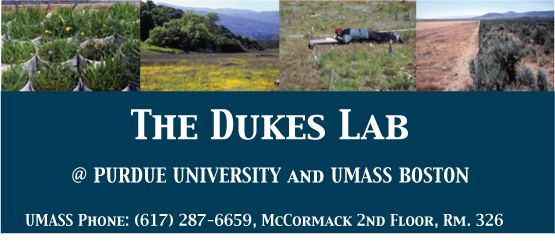
|
Katie Theoharides, M.S. Graduate, 2007.
Currently: Conservation Planning Associate at Defenders of Wildlife
|
|

|
Thesis title: PLANT INVASIONS ACROSS SPACE AND TIME: FACTORS AFFECTING NON-INDIGENOUS PLANT SPECIES SUCCESS DURING FOUR STAGES OF INVASION Abstract: Invasive non-indigenous plant species (NIPS) threaten native diversity, alter ecosystem processes, and cause economic loss. Impacts of invasive NIPS can interact with impacts of other components of global change, potentially intensifying shifts in community composition and/or ecosystem processes. Many studies have examined the traits that make species invasive, the characteristics of invasible ecosystems, and the impacts of invasions on native communities. Understanding and predicting general patterns of invasion remains difficult, largely because of complex interactions between processes at different spatial and temporal scales that determine the success of NIPS. In this review we outline a general framework based on four well-established spatio-temporal stages of the invasion process: Transport, Colonization, Establishment and Spread. At each stage we organize findings and ideas about the filters that limit NIPS success, and discuss some of the relevant work examining the effectiveness of these filters in natural systems. While it remains difficult to draw general conclusions about the risk of invasion across ecosystems, delineate universal "invader traits," or predict large-scale extinctions caused by NIPS introduction, this review highlights the growing body of knowledge that suggests that success of invasive NIPS is controlled by a series of key processes or filters. These filters are common to all invasion events, though the relative importance of a filter may be species and location specific. We suggest that research should be directed towards understanding how filters interact to prevent or permit invasion through multi-scale field studies. We also suggest that management studies assess methods to strengthen filters specific to each stage of the invasion process in order to develop a more integrated approach to invasion management. Finally, we use the framework to briefly examine potential interactions between climate change and the processes that filter invasion, and discuss how these changes may influence future invasion success. |
